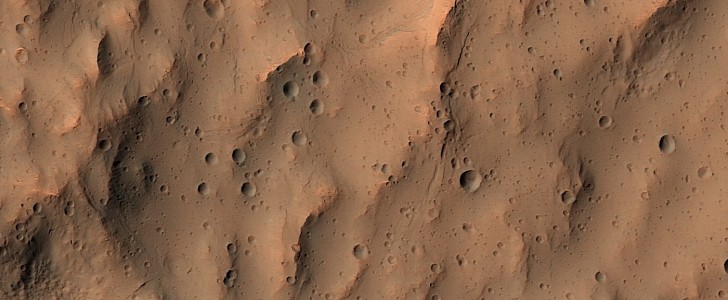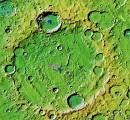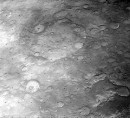When you take a look at our neighboring planet Mars, you get the feeling that most of its secrets lie exposed to the naked eye. In a sense, that is so, as most of the planet’s tumultuous past is displayed for all to see, as there is no vegetation, water, or ice to cover the scars.
But, like most other objects in our solar system, Mars is very old. Some 4.6 billion years, to be vaguely accurate, and that means some of the events the planet went through, or the effects they’ve had, will forever be lost in the untold history of our celestial neighborhood.
As one of the two planets bordered by the Asteroid Belt, Mars has long been a preferred target for asteroids who suddenly decided to go for the inner planets. That’s great for us, as we’ve probably been shielded on more than one occasion from a direct hit, but they left deep wounds on the surface of the Red Planet.
Some of those wounds are so old however that it’s impossible to tell what exactly they were. Yet by using secondary clues, scientists are able to find out more about the hidden past of the planet.
Before us sits an image taken by the HiRISE camera back in 2016 from an altitude of 253 km (157 miles). It shows a 1 km (0.62 miles) across portion of an undisclosed location on the surface, riddled with tiny little craters that are not the result of a direct hit.
They’re called secondary impact craters, and they form when material ejected by the strike of a comet or asteroid comes back down onto the surface, at times striking hard. They might not be as spectacular or large as the main ones, but at times they’re the only things left of what surely must have been a dramatic event.
That’s what’s happening here, where these secondary craters are the only signs of an old, major impact that “took place long enough ago that their association with a particular crater has been erased.”
Such development can cause headaches for the people looking at Mars hoping to better understand it, as “it is necessary to distinguish secondary craters from the primary impacts that we rely upon to estimate the ages of Martian surfaces.”
As one of the two planets bordered by the Asteroid Belt, Mars has long been a preferred target for asteroids who suddenly decided to go for the inner planets. That’s great for us, as we’ve probably been shielded on more than one occasion from a direct hit, but they left deep wounds on the surface of the Red Planet.
Some of those wounds are so old however that it’s impossible to tell what exactly they were. Yet by using secondary clues, scientists are able to find out more about the hidden past of the planet.
Before us sits an image taken by the HiRISE camera back in 2016 from an altitude of 253 km (157 miles). It shows a 1 km (0.62 miles) across portion of an undisclosed location on the surface, riddled with tiny little craters that are not the result of a direct hit.
They’re called secondary impact craters, and they form when material ejected by the strike of a comet or asteroid comes back down onto the surface, at times striking hard. They might not be as spectacular or large as the main ones, but at times they’re the only things left of what surely must have been a dramatic event.
That’s what’s happening here, where these secondary craters are the only signs of an old, major impact that “took place long enough ago that their association with a particular crater has been erased.”
Such development can cause headaches for the people looking at Mars hoping to better understand it, as “it is necessary to distinguish secondary craters from the primary impacts that we rely upon to estimate the ages of Martian surfaces.”







